The tenor saxophone delivers a deep, full sound that hooks listeners across many music styles like jazz, blues, rock, and pop. Its voice carries stories filled with emotion and soul, making it a favorite for musicians who want to add warmth and punch to their tunes. Players often find that this instrument opens new doors for creativity, blending smoothly with other sounds while standing out with its unique charm. Those who dive into the tenor sax experience a world of vibrant music that never fades, sparking passion and endless possibilities on stage or in the studio. Keep reading to uncover why this saxophone’s magic continues to captivate and inspire music lovers everywhere.
However, to truly let the tenor sax come through in your mix, it is crucial to understand the role of equalization (EQ) in shaping its sound.
In this article, we’ll first cover a step by step on how to EQ a tenor sax. We’ll then cover all the finer details that you’ll need to know for how to eq a saxophone.
Step-by-Step Walkthrough of EQing a Tenor Sax
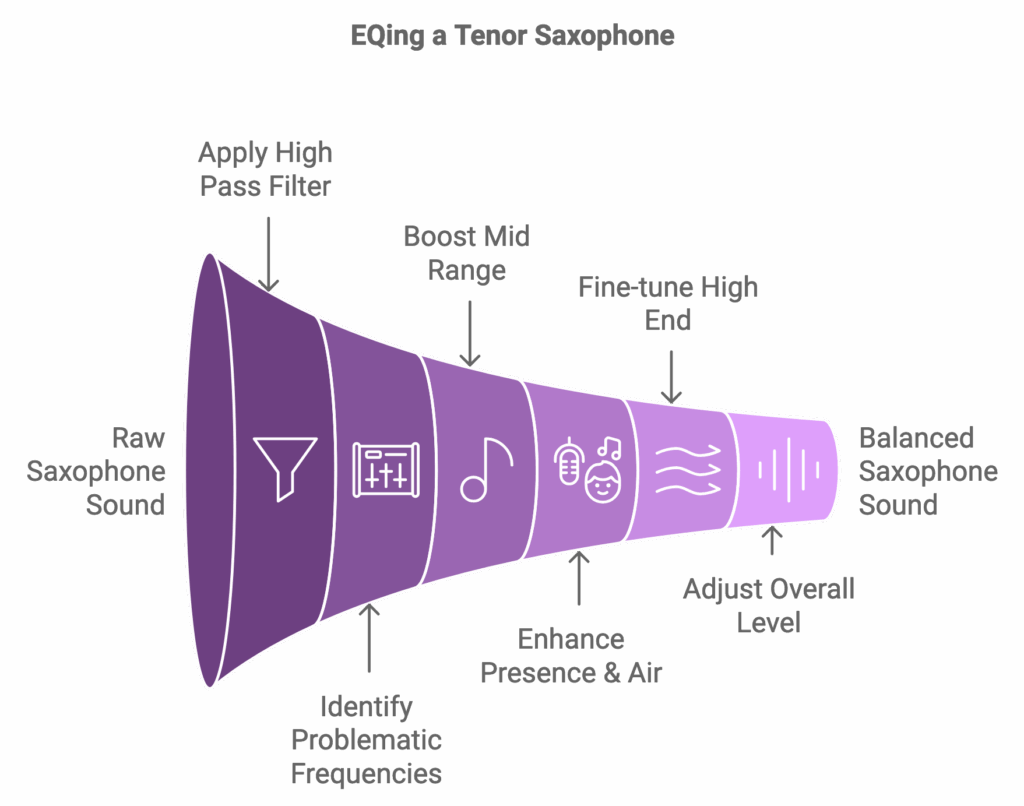
Here is a step by step walkthrough of what the process of eqing a tenor sax might look like.
This is just an example.
Each song will reqiure specific EQing, but you can use this walkthrough as a starting point.
1. High Pass Filter
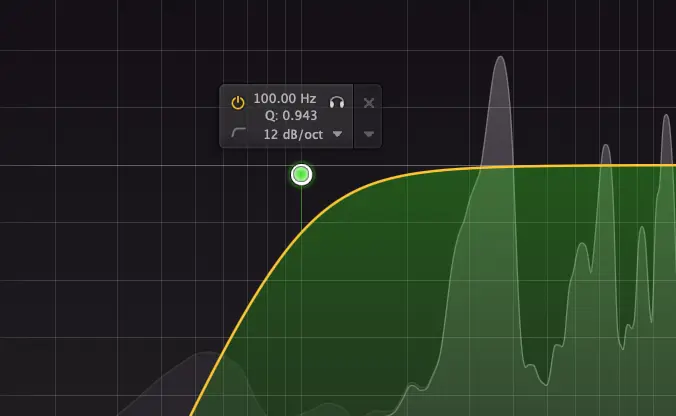
Apply a high-pass filter at around 100Hz to remove any unwanted low-end rumble.
2. Problematic Frequencies

Identify any problematic frequencies in the low-mids (200Hz-500Hz) that may contribute to muddiness or boxiness. Apply a narrow cut to reduce these frequencies.
🏆 Our Favorite EQ for a Tenor Sax
We’ve found that FabFilter Pro-Q 3 is THE BEST EQ for a Tenor Sax.
It is soooo precise and transparent that you can easily identify any problem frequencies and cut them out.
Honestly, we can’t wait to use this plugin when we get new recordings of saxaphones and other instruments.
There’s a reason that this has been one of the best EQ plugins on the markert for over a decade.
3. Boost Mid Range

Gently boost the mid-range (1kHz-2kHz) to add clarity and definition to the sax’s core tone.
4. Presence & Air
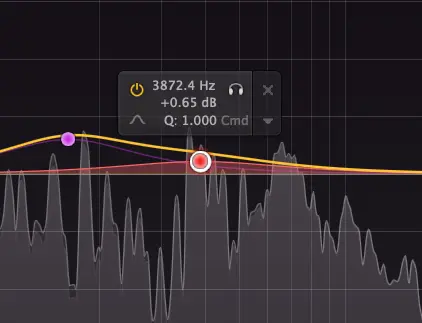
Enhance the presence and air of the sax by applying a subtle boost in the upper mids (3kHz-5kHz).
5. High End

Fine-tune the high-end (above 5kHz) to add sparkle and brilliance without introducing harshness.
6. Adjust Overall Level
Adjust the overall level of the EQ to ensure the sax sits well in the mix and doesn’t overpower other instruments.
7. Listen with Full Mix
Listen to the EQ adjustments in the context of the full mix and make any necessary tweaks to achieve the desired balance and cohesion.
Understanding the Tenor Saxophone Frequency Range and Range of Notes
Before diving into EQ techniques, you’ll need to know the typical tenor sax note range and tenor sax frequency range.
The tenor saxophoe range operates primarily in the mid to high-frequency range, with its fundamental frequencies spanning from around 100Hz to 830Hz.
However, this doesn’t mean that we EQ only in this 100Hz to 830Hz range.
More on this later in this section.
Here is the chart showing the frequency range of the tenor saxophone in markdown format, with the citations removed:
| Tenor Saxophone Range | Frequency (Hz) |
|---|---|
| Lowest Note (Bb) | ~110 Hz |
| Low A | 220 Hz |
| Middle C | 261.6 Hz |
| High F | 698.5 Hz |
| Highest Note* | ~830 Hz |
The typical frequency range of the tenor saxophone spans from around 110 Hz for the lowest notes up to about 830 Hz in the altissimo register.
The fundamental frequencies are approximately:
- Low Bb: 110 Hz
- Low A: 220 Hz
- Middle C: 261.6 Hz
- High F: 698.5 Hz
However, the tenor sax also produces strong overtones that extend well above its fundamental frequency range, giving it a brighter, richer tone.
The highest practical note is around high F# at 740 Hz, but skilled players can reach over 830 Hz using advanced techniques like altissimo.
When it comes to EQing the tenor sax, the whole frequency spectrum comes into play.
Here is a breakdown of the full frequency spectrum and how these relate to the tenor sax.
- Low-end (100Hz-250Hz): Provides warmth and body to the sound.
- Mid-range (250Hz-2kHz): Responsible for the core tone and clarity of the sax.
- High-end (2kHz and above): Adds air, presence, and articulation to the sound.
You need to understand the note range of the tenor sax as well as the general tonal charecterisics of the full frequncy spectrum to make inoformed EQing decisions.
Basic EQ Settings for Tenor Sax
When starting out with EQ for tenor sax, there are a few fundamental adjustments that can help you achieve a balanced and polished sound:
- Low-end adjustments:
- Apply a high-pass filter (HPF) to remove unnecessary low frequencies below 100Hz.
- This helps clean up any muddiness or rumble that may interfere with the clarity of the sax.
- Mid-range sculpting:
- Focus on the 250Hz-2kHz range to shape the core tone of the saxophone.
- Gently boost or cut specific frequencies to achieve the desired balance of warmth and clarity.
- Be cautious not to overdo the adjustments, as excessive boosting can lead to a honky or nasal sound.
- High-frequency enhancements:
- Add a subtle boost in the 5kHz-10kHz range to introduce air and presence to the sound.
- This can help the sax cut through the mix and add a sense of sparkle and definition.
- Be mindful not to boost too aggressively, as it may result in a harsh or piercing tone.
Remember, these are starting points. The specific EQ settings will vary depending on the individual saxophone, the player’s technique, and the musical context.
Advanced EQ Techniques
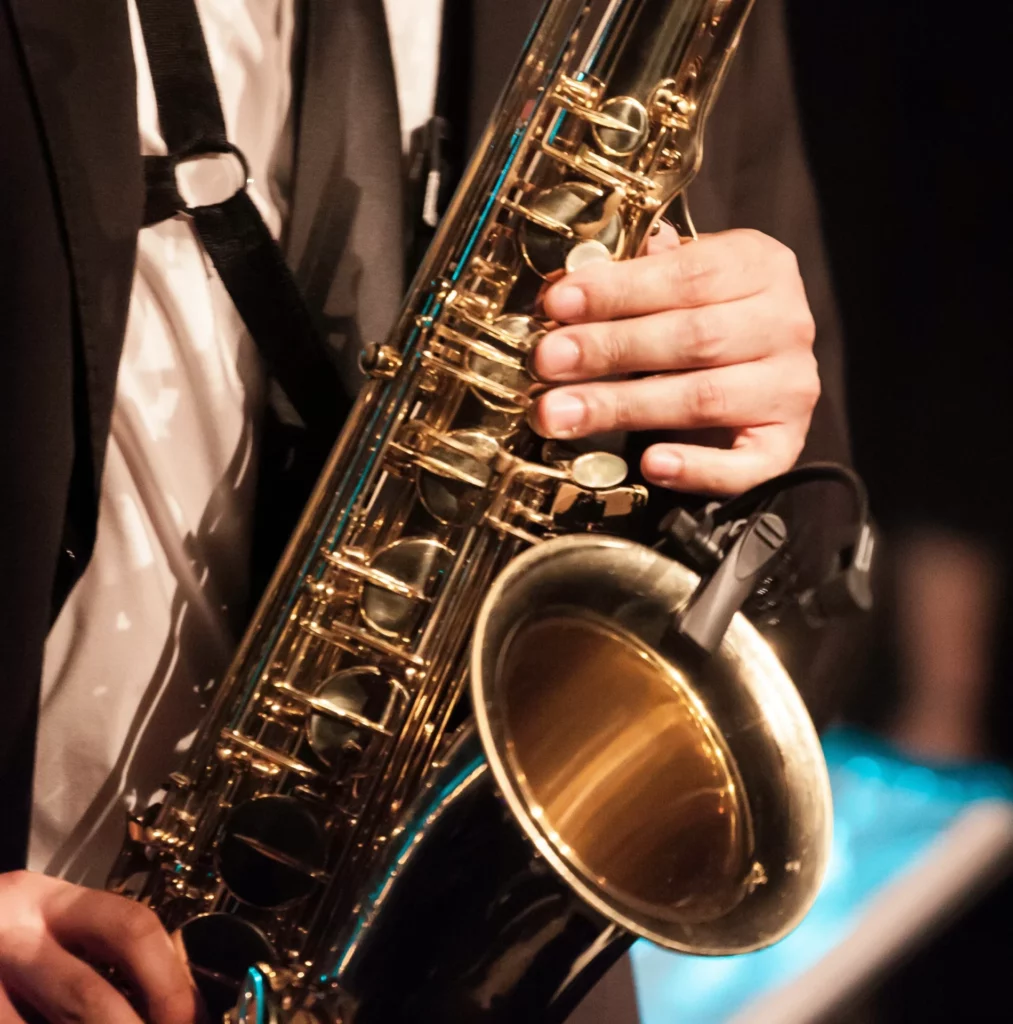
As you become more comfortable with basic EQ adjustments, you can explore advanced techniques to tackle specific issues and enhance the tenor sax’s performance in various situations.
Dealing with muddiness and boxiness:
- If the saxophone sounds muddy or boxy, try identifying the problematic frequency range (usually in the low-mids around 200Hz-500Hz).
- Apply a narrow cut using a bell curve or notch filter to reduce the offending frequencies without compromising the overall tone.
Enhancing articulation and presence:
- To improve the articulation and presence of the sax in a mix, focus on the upper mid-range (2kHz-5kHz).
- A gentle boost in this area can help the sax cut through and be more clearly heard, especially in dense arrangements.
Making the tenor sax stand out in a band setting:
- In a band context, the tenor sax often competes with other instruments for sonic space.
- Use EQ to carve out a specific frequency range for the sax to occupy, ensuring it doesn’t clash with other instruments.
- This may involve slightly attenuating frequencies that are prominent in other instruments, such as guitars or keyboards, to create a pocket for the sax to shine.
EQ in Different Performance Contexts

The approach to EQ can vary depending on the performance context, whether it’s a solo showcase or an ensemble setting.
Solo performance:
- When the tenor sax is the focal point, you have more freedom to shape its sound without worrying about competing instruments.
- Focus on highlighting the unique characteristics of the saxophone and tailoring the EQ to the player’s individual style and tone preferences.
- Depending on the recording, you can be more generous with EQ boosts as no other instruments will overlap the sax.
Ensemble settings:
- In a band or ensemble, the goal is to make the tenor sax blend well with other instruments while still maintaining its distinct voice.
- Pay attention to the frequency ranges occupied by other instruments and adjust the EQ accordingly. Make sure to use frequency spectrum analyzers to see what prominent frequencies are in each instrument.
- This may involve slightly attenuating frequencies that clash with other instruments or boosting frequencies that help the sax cut through the mix.
Common EQ Mistakes to Avoid
While EQ is a powerful tool, it’s important to be aware of common pitfalls that can negatively impact the sound of the tenor sax.
Over-EQing:
- Resist the temptation to make drastic EQ adjustments, as this can result in an unnatural or processed sound.
- Remember that the goal is to enhance the natural qualities of the saxophone, not to completely alter its character.
- Make subtle adjustments and regularly reference the original, unprocessed sound to ensure you’re not straying too far from the sax’s inherent tone.
Ignoring the acoustic environment:
- The acoustic space in which the saxophone is recorded or performed can greatly influence the EQ decisions you make.
- A room with natural reverb or reflections may require different EQ treatment compared to a dry, isolated recording environment.
- Always consider the acoustic context and make EQ adjustments that complement the space rather than fighting against it.
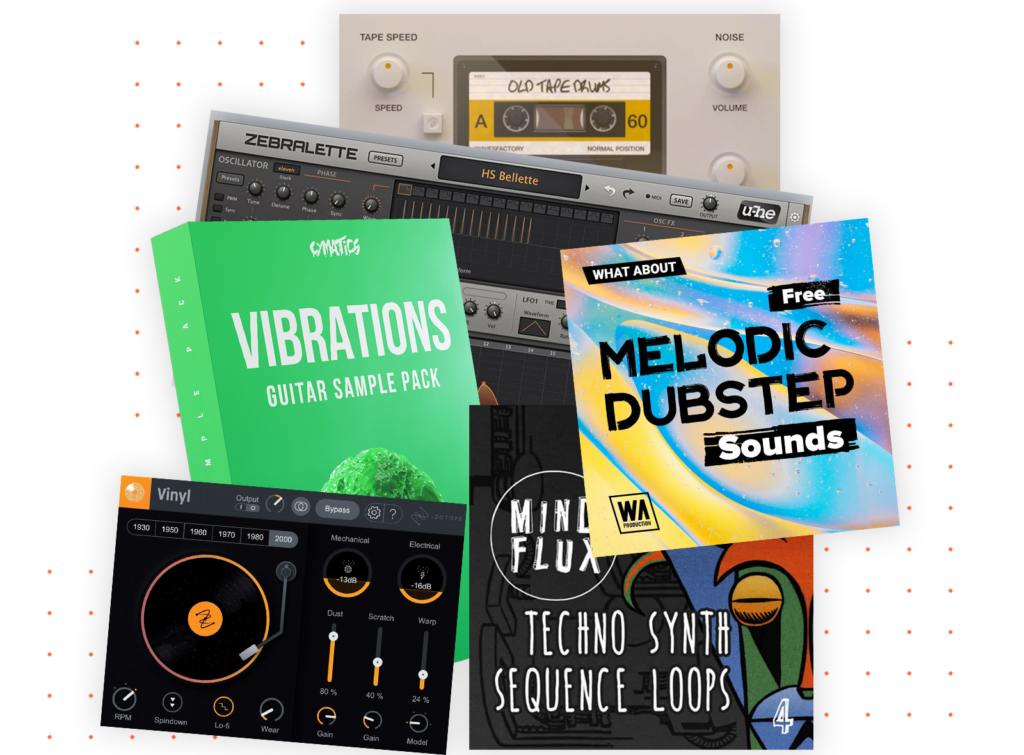
Access 4,000+ Music Tools
Access our entire library of music tools including sample packs, VST plugins, DAW templates, and much more.
Additional Tools and Techniques
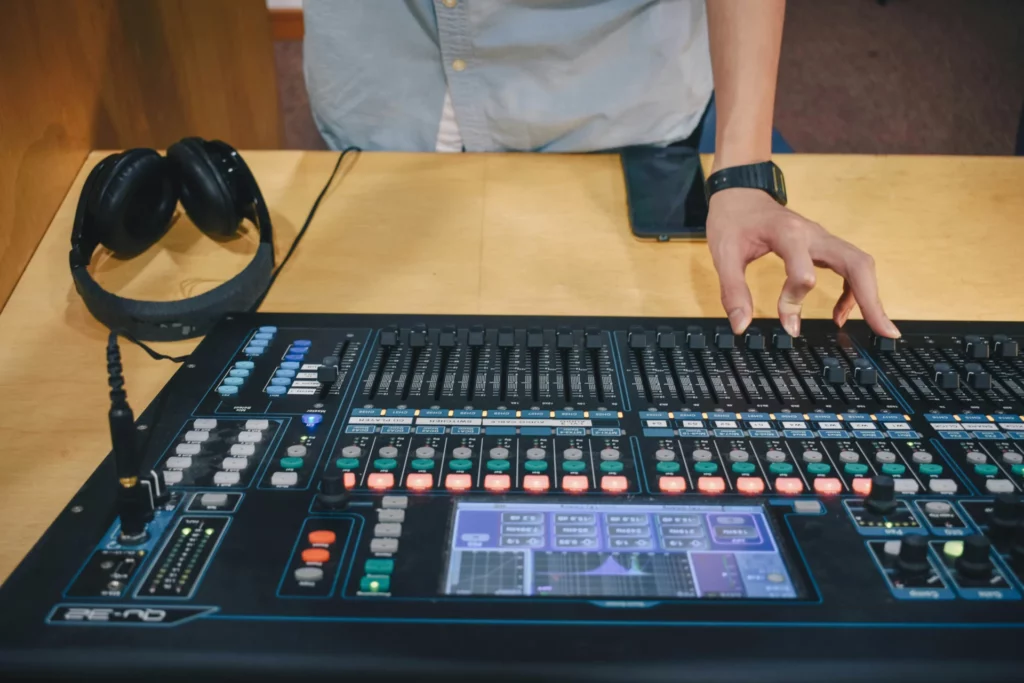
While EQ is a crucial aspect of shaping the sound of the tenor sax, it’s not the only tool at your disposal.
Other processing techniques can work in conjunction with EQ to further refine and enhance the saxophone’s performance.
Compression
- Compression can help control the dynamic range of the saxophone, evening out the levels and adding sustain to the sound.
- The amount of compressions you need really depends on the recording you have.
- When used in moderation, compression can make the sax sound more consistent and sit better in the mix.
- Be cautious not to over-compress, as it can result in a lifeless or squashed sound.
🏆 Our Favorite Compressor Plugin for Saxaphones
Our compression these days is very simple. We use one of the most famous compressors ever, the 1176 by UAD.
It’s super easy to use and adds that punch and character that you can’t get with anything else.
We use this on our saxaphones and really all our live instruments. It’s that good!
Reverb
- Reverb can add depth and space to the tenor sax, simulating the natural ambiance of a room or hall.
- Choose a reverb type that complements the style of music and the desired aesthetic.
- Adjust the reverb settings, such as decay time and pre-delay, to achieve a natural and cohesive sound.
🏆 Our Favorite reverg for Saxaphones
We use iZotope’s Neoverb on our saxophones because its AI-powered EQ is super helpful when you have an overcrowding mix (which most saxaphone songs do).
With its Reverb Assistant, you can tailor unique spaces for the sax with minimal effort.
Dynamic EQ and Side-Chain Techniques
- Dynamic EQ allows you to apply EQ adjustments based on the level of the input signal, providing more precise control over the frequency balance.
- Side-chain techniques involve using the level of one signal to control the processing of another.
- For example, you could use the kick drum to trigger a momentary dip in the low-end of the saxophone, creating space for the kick in the mix.
Eqing of a Tenor Sax In a Song
To further illustrate the concepts discussed, let’s explore a case study analysis of EQ settings in a famous tenor sax recording.
“Take Five” by Dave Brubeck Quartet (featuring Paul Desmond on tenor sax)
- The tenor sax in this iconic recording has a smooth and airy quality, with a prominent presence in the mid to high-frequency range.
- The EQ likely involved a gentle boost in the upper mids (around 3kHz-5kHz) to enhance the articulation and clarity of the sax.
- A subtle high-pass filter may have been applied to remove any low-end rumble, ensuring a clean and focused sound.
- The overall EQ treatment aims to showcase the sax’s melodic lines and improvisations while maintaining a balanced tone that complements the piano and rhythm section.
Further Resources
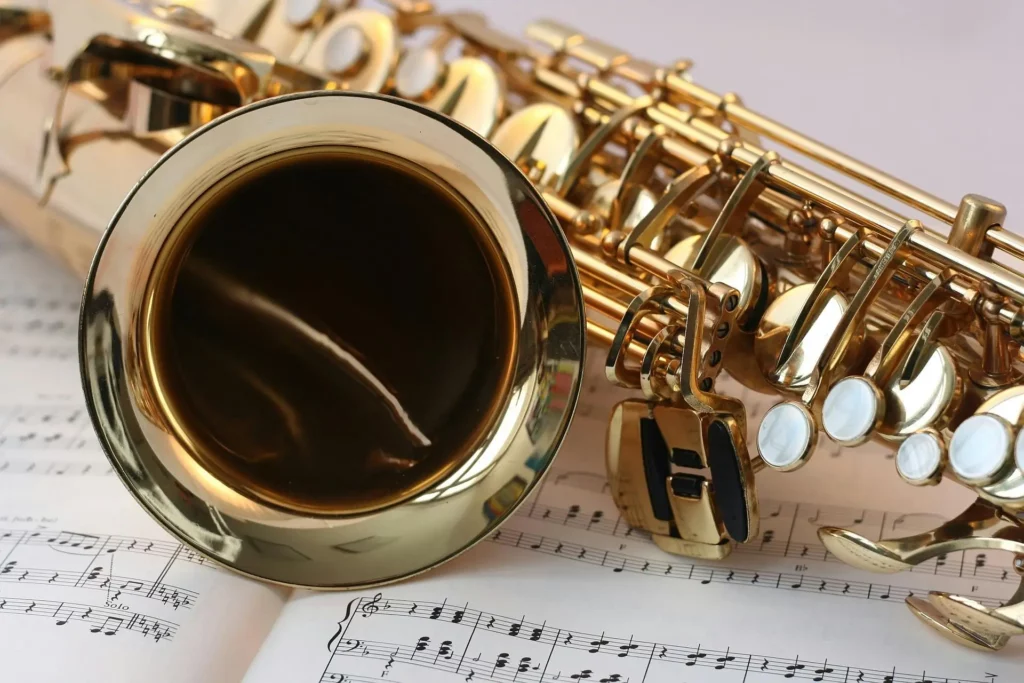
To deepen your understanding of EQ and expand your skills in processing the tenor saxophone, consider exploring the following resources:
Hardware EQ units:
Tutorials and advanced courses:
- “Mixing Saxophone: EQ, Compression, and Effects” by PureMix
- “Mixing Jazz Horns” by Mix with the Masters
These resources offer in-depth knowledge, practical tips, and hands-on exercises to help you EQ the tenor sax and take your mixes to the next level.
Save Money On Music Production Tools!
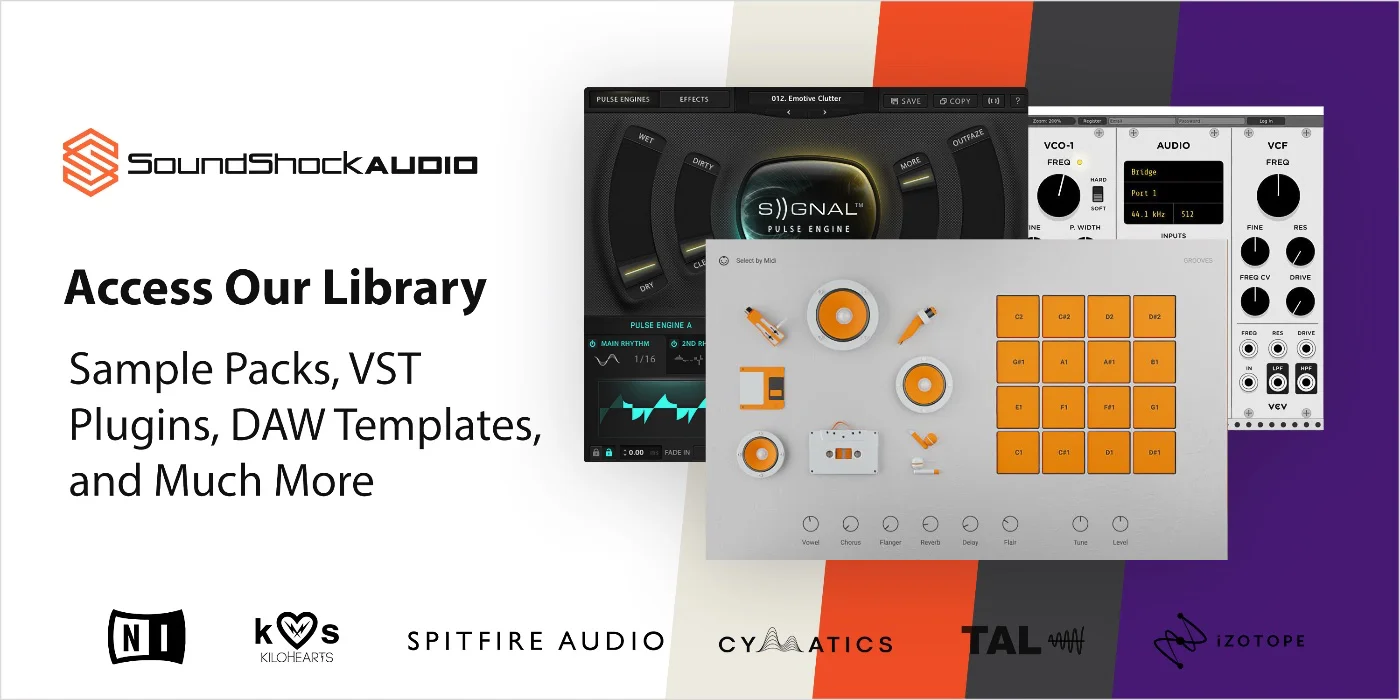
Why spend hundreds or even thousands of dollars on music production tools when you can access them all for a low monthly fee at SoundShockAudio?
Subscribe now and start creating professional-sounding music without breaking the bank. We’ve got everything from sample packs, to VST plugins, and more.
Need more help when it comes to EQing?
Check out the articles:





hey there, can anyone explain a bit more about those advanced EQ techniques? kinda got lost with all the technical stuff. Cheers
Certainly! Advanced EQ involves using dynamic EQs and mid/side processing to enhance or diminish specific frequencies. It’s all about finding the right balance for the tenor’s unique sound.
wow, didn’t know there were so many music tools out there. gonna check some of them for sure. any good ones for absolute beginners?
Not sure I agree with all the basic EQ settings mentioned. I’ve had better results tweaking the mid frequencies a bit more than suggested. Anyone else?
That’s a good point. Adjusting EQ settings can depend heavily on the acoustics of the venue and the specific sound you’re aiming for. Personal experimentation can often lead to better results.
Fantastic article, Daniel! The segment on EQ in different performance contexts was particularly enlightening. It’s interesting to see how adaptive one must be to ensure optimal sound quality.
Thanks for checking out the article!
Ever tried using these EQ settings on non-traditional instruments or sound sources? Like a kitchen blender or something lol. Could be fun.
so about that 7-day-money-back-guarantee, has anyone actually used it? just wondering if it’s legit or not.
Daniel, the advanced EQ techniques section is a goldmine for producers of all levels. Your breakdown makes it accessible and practical for improving our mixes. Appreciated.
Can someone explain how the EQ settings would vary between different genres? Say, jazz vs. pop for the tenor sax?
Great question! In jazz, you might aim for a warmer, more resonant tone, enhancing lower frequencies slightly. In pop, a brighter, more forward sound is common, focusing on higher frequencies for clarity and cut-through in the mix.